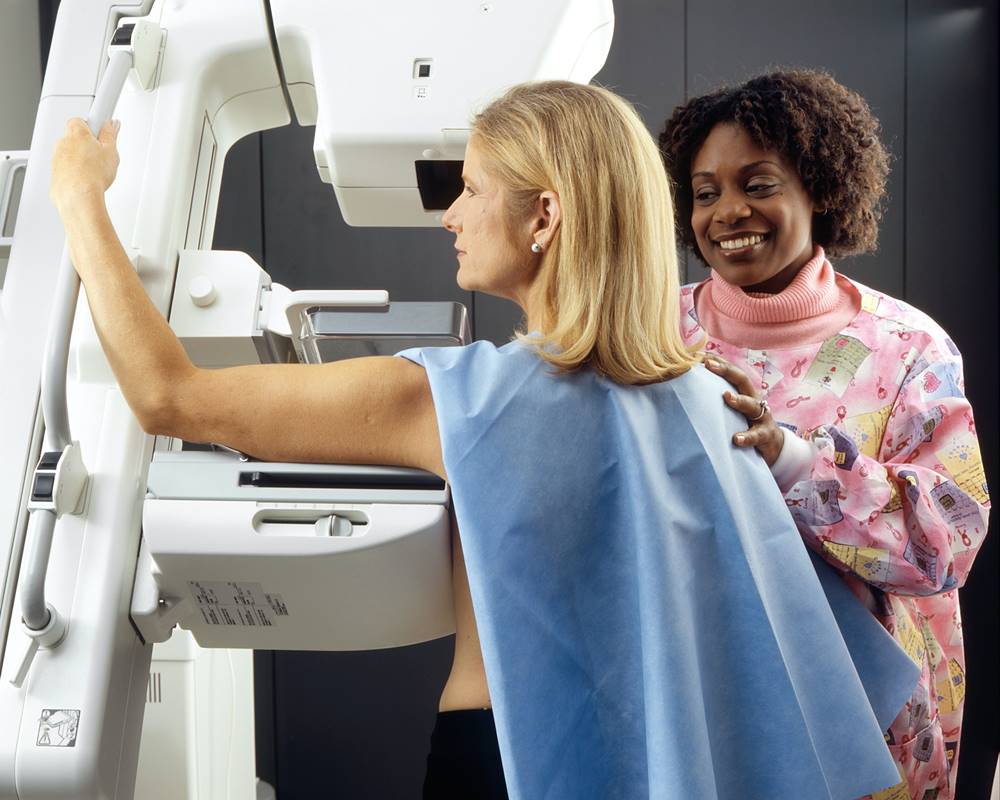Breast cancer screening refers to examining a woman’s breast for cancer before any signs or symptoms of the disease. A healthcare specialist should inform every woman about the best screening option for them. However, breast cancer screening can’t prevent breast cancer, but it can surely help diagnose breast cancer at an early stage, when it’s easy to treat.
Most women at increased risk may require different tests or need to be tested more frequently. <br>
- Age 25 to 39: Clinical breast exam should be done within one to three years.
- Age 40 and older: A mammogram and clinical breast exam should be performed each year.
What is a clinical breast exam?
Usually, a clinical breast exam is performed by a healthcare expert who is well-trained to identify several different kinds of abnormalities and warning signs. This in-office exam will most likely be done by your family physician or gynecologist during your annual exam, while your breast self-exam is something all women must do at least once a month at home.
During your clinical breast exam, a doctor, nurse, or other health experts will check your breast visually and manually for lumps, skin, and nipple abnormalities. They use hands to examine your breasts, nipples, and areas around your breasts, like armpits. You must be fully prepared to answer all the questions regarding any changes you’ve noticed in your breasts and reproductive history.
What is a mammogram?
A mammogram is literally an X-ray image of your breasts, and doctors use a mammogram to detect early signs of breast cancer or small tumors that your healthcare expert can’t feel. Moreover, regular mammograms are the perfect tests doctors employ to identify breast cancer early, approximately three years before it can be felt. As the earlier the cancer is diagnosed, the better it’s treated.
Keep in mind, different women have different symptoms of breast cancer. In fact, some don’t show any signs or symptoms at all.
Here are a few warning signs of breast cancer:
- New lump in your breast or underarm (armpit).
- Stiffening or swelling of the skin around your breasts.
- Frequent pain in any area of the breast
- Any sudden changes in size or shop of the breast.
- Redness or flaky skin around your nipple or breast
- Irritation or puckering on your breast.
Remember, these symptoms can happen with other conditions that are not cancer too. So, if you notice any of these signs that stress you, immediately consult your trusted doctor.
Factors causing Breast Cancer
Doctors know and understand that breast cancer happens when some breast cells start to grow abnormally. However, there is not just a single cause that leads to breast cancer.
According to experts, changes in hormones, lifestyle, and environment may increase the risk of breast cancer. Factors like family history of the disease or specific genetic mutations, postmenopausal hormone therapy, age, etc., are some causes of breast cancer.
Although, it doesn’t exactly mean you will get breast cancer. Thus, you must start screening at a young age, get extra tests, or be tested more than usual.
Reduce your risk for breast cancer
If you’re worried about getting breast cancer, it’s obvious to wonder about specific steps you can take to prevent breast cancer. However, some risk factors like family history can’t be changed. Still, there are some lifestyle and diet change you can make to reduce the risk.
- Maintain a healthy overall weight and a low amount of body fat even after menopause. Try to follow a balanced diet.
- Be as much physically active as you possibly can. Keep up at least 150 minutes a week of moderate aerobic activity or 75 minutes of vigorous aerobic activity weekly.
- Avoid alcohol or limit yourself to a single drink per day.
- Try to breastfeed in particular for six months after giving birth and continue even when .other foods are introduced to your baby.

